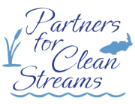 When asked about the benefits of rain water capture, the gardeners out there will likely tell you that it helps to cut down on water bills during the growing season. However, the ecologists out there will also tell you that is can help reduce the ever-present issue of nutrients and other contaminants flowing in our streams, rivers, and lakes. But how can installing a rain barrel/rain garden on your property help reduce the amount of contaminants, like excess nutrients, from entering our waterways when there are typically not a great deal of those contaminants in rainwater?
When asked about the benefits of rain water capture, the gardeners out there will likely tell you that it helps to cut down on water bills during the growing season. However, the ecologists out there will also tell you that is can help reduce the ever-present issue of nutrients and other contaminants flowing in our streams, rivers, and lakes. But how can installing a rain barrel/rain garden on your property help reduce the amount of contaminants, like excess nutrients, from entering our waterways when there are typically not a great deal of those contaminants in rainwater?
The answer is pretty straight-forward. As rain runs off of lawns or over hardened surfaces like sidewalks and roads, it picks up chemicals on those surfaces; think fertilizers, oil and grease, road salt, etc. Many of these contaminants are harmful to aquatic critters (fish, amphibians, etc.), and you are probably well aware of the annual Lake Erie algal bloom that the runoff of fertilizer-filled waters contributes to.
In summary, there are several reasons to divert rain water away from our NW Ohio surface waters, and fortunately, there are several ways that home and business owners do this! Below are summaries of three options; rain barrels, downspout redirection, and planting native vegetation/rain gardens.
- Rain barrels are an inexpensive way to save water/money and minimize the effects of runoff. Typical rain barrels have a 50-60 gallon capacity, and if used correctly, can save 1,300 gallons of water during a growing season. Anytime your garden needs water, simply draw water from your rain barrel! To purchase a rain barrel or to sign up for a rain barrel workshop, contact the Lucas Soil & Water Conservation District at (419) 893-1966.
- Building Downspouts can be redirected to flow onto your lawn or garden, or into a rain barrel. Redirecting downspouts towards a green space, or into your rain barrel (for garden use later), results in rainwater being absorbed into the ground where natural filtration can take place. To learn about redirecting downspouts, and other green infrastructure, visit the U.S. EPA’s website.
- Native plants in your garden are beautiful and very low-maintenance; they have deep, thirsty roots that help retain water in your garden and absorb extra fertilizer before it can run off your yard. Another plus – due to their deep roots and disease-resistant qualities, native plants like the Black-eyed Susan and Coneflower require less water and no added fertilizer. For great list of places to purchase native plant in the Toledo area, visit this Rain Garden Initiative (RGI) link. If you are interested in taking it a step further and building a rain garden, these RGI links (about and how to) are helpful.
